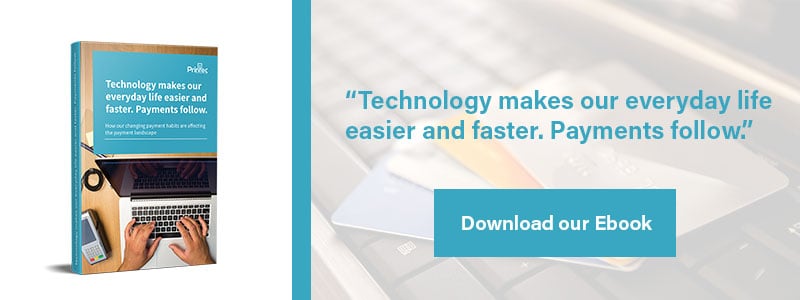
Money and payments are flexible - they evolve, transform and teach us everyday new things about their changing dynamics. In recent years, payments feel like they have become more Instant, Invisible and Free.
We all have access to more and more non-banking options now that retailers and tech giants are joining in and disrupt the payments sector. The rise of new methods of payment in today’s digital world, including e-wallets and wearables, is driven by the need to speed up the checkout process, make it more flexible and also build long-lasting relationships with customers based on trust. For example, the so-called challenger or neo-banks distinguish themselves from traditional banks through their almost exclusive focus on digital operations and rely heavily on the latest technology to provide services to their customers.
What’s up with IIF payments?
The future of payments is all about seamless transactions as a foundation of good customer experience. Payments are gradually incorporated into third-party apps or devices, like wearables, digital wallets and IoT devices, becoming invisible. We’re at a point where we are able to transfer money in less than 10 seconds, 24/7/365, enjoying instant payments. Keep in mind though that end-users can use instant payments only if the company that provides the services is part of an interbank real-time retail payments infrastructure.
The liberation of payments is more apparent in mobile apps, which offer payment solutions to consumers and retailers for free, as a tool to acquire new customers and leverage data. These are some simple examples showcasing we’re in the IIF (Instant, Invisible, Free) era of payments.
Another competitor to the classic payment methods is the cryptocurrency, like Libra, Facebook’s virtual currency. The most popular social media platform in the world has in plan to embed a payment system into the messaging services so that users without a bank account can benefit from instant money transfers to their friends. Until cryptocurrencies overcome the challenges they face with regulations and technical obstacles, transactions through card networks like Visa and Mastercard remain leaders in the payments industry.
In the Accenture Global Payments Pulse Survey 2019 most of the companies and banks affirmed that payments were becoming more instant, invisible and free. Countries from APAC are the most open to instant payments, followed by North America and Europe (which are more skeptical). Asia is highly responsive to advanced digital payments, mostly because traditional payment solutions are not yet fully functional in countries like India or China.
In a market like China, digital payments were worth $20 Trillion in 2018, amounting to ⅔ of all digital mobile payments worldwide. It is estimated that by 2022 China will spend $50 Trillion in the form of digital payments. In comparison with China, the USA has spent only $200 Billion in the form of digital payments in 2018.
New digital services offer various advantages to consumers and businesses, allowing faster payments for goods and services, or urgent payments 24/7/365, while enabling businesses to build loyalty programs and be more competitive.
In the near future, the payment landscape will totally change compared to what we are used to today. We are heading to a cashless society and digital money will encourage the creation of alternative currencies used for specific transactions.
Read more interesting facts about how technology is making our everyday life easier and faster when it comes to payments, in our latest Ebook.








